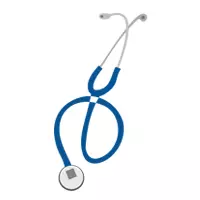- Dermatology
- Anesthesiology
- Cardiology and CTVS
- Critical Care
- Diabetes and Endocrinology
- Gastroenterology
- Obstretics-Gynaecology
- Ophthalmology
- Orthopaedics
- Pediatrics-Neonatology
- Pulmonology
- Laboratory Medicine
- Paramedical
- Physiotherapy
- Doctor News
- Government Policies
- Hospital & Diagnostics
- International Health News
- Medical Organization News
- Medico Legal News
- Bone Health Fact Check
- Brain Health Fact Check
- Cancer Related Fact Check
- Child Care Fact Check
- Dental and oral health fact check
- Diabetes and metabolic health fact check
- Diet and Nutrition Fact Check
- Eye and ENT Care Fact Check
- Fitness fact check
- Gut health fact check
- Heart health fact check
- Kidney health fact check
- Medical education fact check
- Men's health fact check
- Respiratory fact check
- Skin and hair care fact check
- Vaccine and Immunization fact check
- Women's health fact check
- Ayurveda Giuidelines
- Ayurveda News
- Homeopathy Guidelines
- Homeopathy News
- Siddha Guidelines
- Siddha News
- Unani Guidelines
- Yoga Guidelines
- Andaman and Nicobar Islands
- Andhra Pradesh
- Arunachal Pradesh
- Chattisgarh
- Dadra and Nagar Haveli
- Daman and Diu
- Himachal Pradesh
- Jammu & Kashmir
- Lakshadweep
- Madhya Pradesh
- Maharashtra
- Uttar Pradesh
- West Bengal
- Ayush Education News
- Dentistry Education News
- Medical Admission News
- Medical Colleges News
- Medical Courses News
- Medical Universities News
- Nursing education News
- Paramedical Education News
- Study Abroad
- Health Investment News
- Health Startup News
- Medical Devices News
- CDSCO (Central Drugs Standard Control Organisation) News
- Pharmacy Education News
- Industry Perspective

NBE activates Online Web Portal for submission of Thesis Protocol by DNB, DrNB trainees
New Delhi : Through a recent notice, NBE (National Board of Examination) has informed DNB/DrNB trainees and all Accredited Institutions/Hospitals for Online Web Portal for submission of Thesis Protocol.
As per NBEMS norms, Thesis Protocols is essential for all DNB/DrNB trainees towards the writing of thesis dissertation according to thesis protocols timelines.
The candidates are required to submit the thesis protocol in accordance with the timelines prescribed in "Thesis protocol & thesis submission guidelines" which is available on following link: https://natboard.edu.in/thesisonline/index
NBEMS has introduced an Online Thesis Protocol Submission Web Portal to submit Institutional Ethics Committee (IEC) approved Thesis Protocol issued by the concerned hospital.
The candidates who have joined from academic session 2021 onwards are required to submit the approved thesis protocol in the format and the same can be submitted using the below mentioned link: https://natboard.edu.in/thesisonline/verifyprotocol
For any query related to Thesis, please contact to NBEMS at 011-45593000 or write at NBEMS Communication Web Portal.
To view the official notice : click here : https://medicaldialogues.in/pdf_upload/natboard-datapublicnoticenotice202211295580-192595.pdf


IMAGES
VIDEO
COMMENTS
Online Web Portal for submission of Thesis Protocol – reg. 2022-10-31. Last date for submission of Thesis for candidate scheduled to appear in DNB Final Theory Examination - March/April …
Guidelines for Thesis Protocol. bjectives, and detailed methodology of the study. In other words, the protocol is the ‘operating manual�. Thesis Protocol before the writing phase commences. …
GUIDELINES FOR THESIS WRITING & SUBMISSION. The proposed study must be approved by the institutional ethics committee and scientific research committee. thesis should be …
Thesis Writing Guidelines for DNB Trainee. Thesis Objectives. Thesis / Dissertation writing is mandatory in postgraduate medical education. The thesis may take the form of a study, an …
The website of department of accreditation gives comprehensive information regarding NBE accreditation norms, latest news & updates, details of NBE accredited departments & seats …
New Delhi: Through a recent notice, the National Board of Examinations (NBE) has informed about the Extension of last date for submission of thesis for DNB/DrNB trainees who …
The guidelines for DNB Thesis writing & submission are given below: For more details you can check in National Board Website. Free Download: Annexure Publication. Thesis Summary Demo file. Declaration cum …
NBEMS has introduced an Online Thesis Protocol Submission Web Portal to submit Institutional Ethics Committee (IEC) approved Thesis Protocol issued by the concerned hospital.